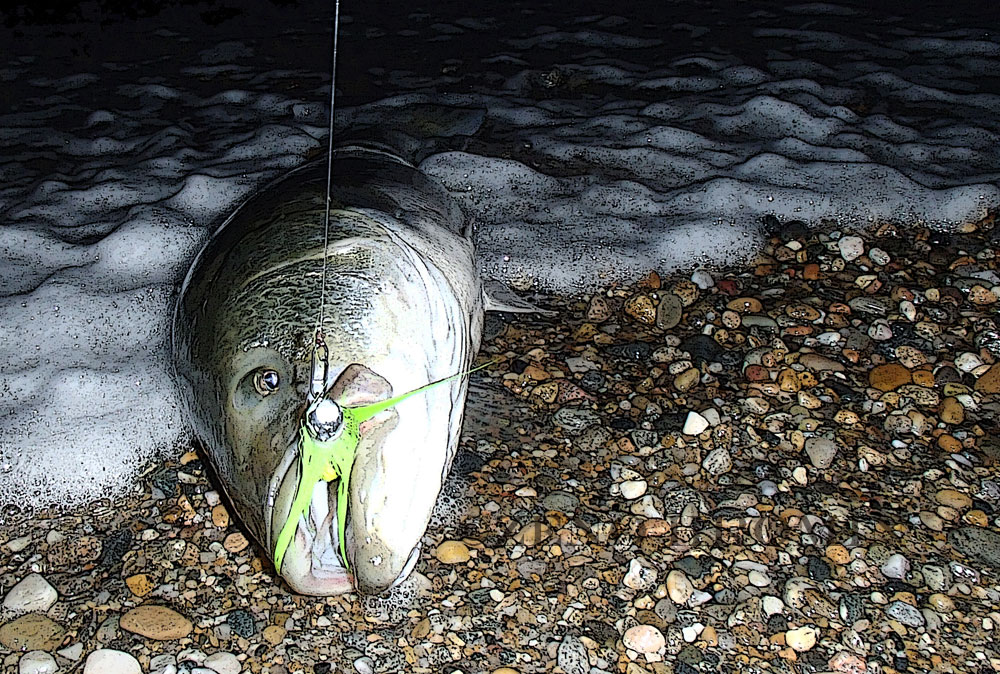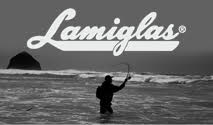Bottom Dwelling
By Dave Anderson
Here we are moving into July (already!) and it’s tourist season at the shore. The water is warm and ocean is very inviting. Today I was doing some yard work and found myself feeling like I just had to go for a swim! I headed to the beach closest to my house, maybe a 20 minute drive, but it’s not much more than a place to cool off. The water on this beach is deep right off the bank and the bottom is made up of mixed boulders, weeds, sandy patches and, everyone’s favorite, stank muck.
But, places that feature these kinds of varied bottom types are the kinds of places that have huge potential to hold baitfish and attract the kinds of fish that keep us out on the rocks at 1 a.m. rather than soaking up the AC on a July night. With the air temps hovering around 90 and my shirt looking like someone had just poured a five gallon bucket of water over my head, I grabbed a divers mask before I hopped in the car.
The 20 minute drive felt like 200 minutes, especially because I didn’t allow myself to crank the air, I wanted that full-on body shock when I dove into the waves! After a sufficient period of floating over the rocks and cooling down, I pulled the mask over my eyes and dove straight to the bottom. The summer water was gin clear but as I neared the bottom it became clouded with large particles that seemed to breathe in and out of the weeds as the waves passed. This is worth noting because if you fish during the day, you know your best chances for success are down near the bottom and that low-hanging silt will make it easier to fool a daytime bass with an artificial.
I leveled off and began swimming down the slope of the bottom. Something that always grabs me right away when I’m deep under the water is the sound; waves rushing by, a boat motor idling a hundred yards away rumbles like it’s right next to you, intermittent clicks and crunches erupt from all sides—it’s a peculiar place to be! But even with all of these sounds, it feels stuffy and quiet at the same time.
On my next dive, I hit the bottom 10-feet below and swam over the top of a mat of weeds and small boulders, roughly the size of toasters and microwaves. As I was kicking along I started to notice that I was spooking these 5- to 6-inch baitfish, they were a shimmering whitish color and darted up out of the weeds swimming forward in bursts of about five feet before burrowing back into the weeds. I don’t know what they were—kingfish maybe? But as I watched these little fish and their actions I started to see some real value in observing.
I made several more deep dives in different weedy spots and each of them held these baitfish in numbers and all of them used the same “flee and burrow” method when they saw, or perhaps, sensed that I was getting too close for comfort. All I can think of right now is a 5-inch rubber shad, sunk to the bottom and fished with deliberate, fast and long hops and after each “hop” allowing the shad to sit for a period of at least three seconds.
It also has me thinking about white bucktails fished with a short white pork trailer or even a 6-inch Slug-Go threaded onto the hook. The belief has long been that a bucktail imitates a squid, but when you think about the fact that bucktails should be fish very close to the bottom and consider the fact that most bucktailers employ a sharp swimming and jigging routine, then you’re probably having the same epiphany that I just had! Visual guidance from the very bait the bass are chasing, there’s no better teacher than Mother Nature and there’s no better way to hone your method than to have your face rubbed in the facts. I suppose I should go back there tonight and put it to the test.












Good info Dave.
↓Wow, I LOVE stuff like this – AWESOME! THANKS!
↓This has me wanting to head out tonight and hit a back bay honeyhole.
always a good story from dave
↓always a good story from dave
↓to quote Dave Anderson
” I wanted that full-on body shock when I dove into the waves ”
Very cool
↓